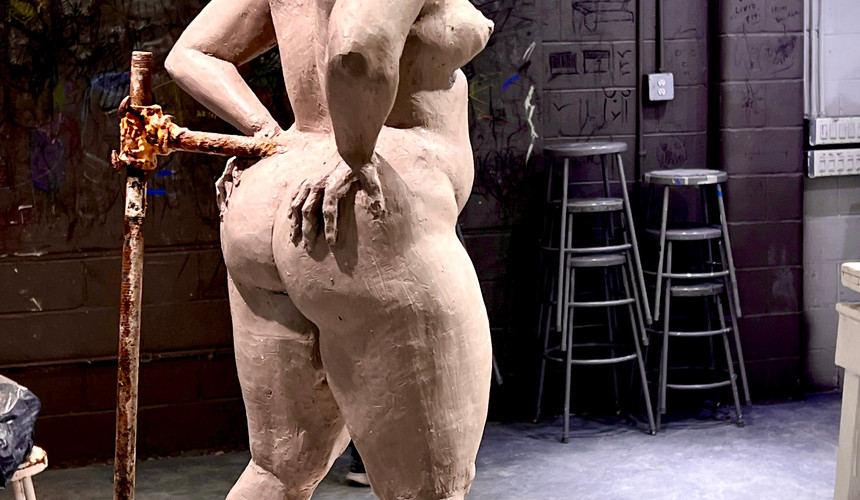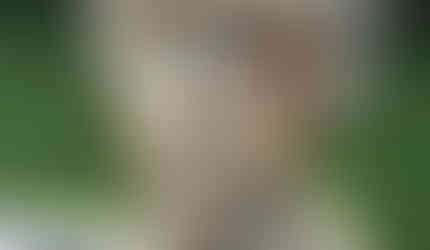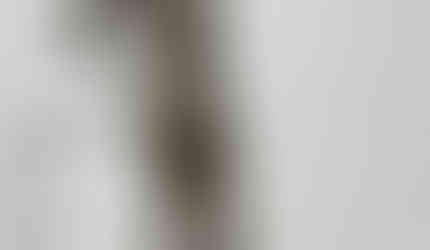This is going to be a story about how I became a sculptor and my accidental tryst with sculpting. But before I get to my story, let’s first define what’s sculpting, and its significance. Sculpture, one of the oldest and most enduring forms of artistic expression, has a rich and varied history that spans thousands of years across different cultures and civilizations. In ancient times, early humans carved figurines and symbols from stone and bone, reflecting their beliefs and daily life. Ancient civilizations such as the Egyptians, Greeks, and Romans, elevated sculpture to new heights, creating monumental statues of gods, rulers, and heroes, often depicting idealized forms of the human body.
During the Middle Ages, religious themes dominated European sculpture, with intricate stone carvings adorning cathedrals and monasteries. The Renaissance period ushered in a revival of classical ideals, with artists like Michelangelo, Donatello, and Leonardo da Vinci creating masterpieces that showcased the human form with unprecedented realism and emotion. The mastery of techniques like bronze casting and marble carving reached unparalleled levels during this period. The Renaissance sculptors pioneering approaches, rooted in a deep appreciation for humanism and a fascination with the human form, gave birth to masterpieces such as Michelangelo's "David" and Donatello's revolutionary interpretations of biblical figures. This era also saw the seamless integration of sculptures into architectural spaces, harmonizing art and environment in a way that continues to inspire contemporary architects and artists.
In the modern era, sculpture underwent radical transformations. The 19th and early 20th centuries saw the rise of movements like Romanticism and Realism, exploring themes of emotion and everyday life. With the advent of abstraction in the early 20th century, sculptors like Pablo Picasso and Henry Moore pushed the boundaries of form and materials, paving the way for contemporary and experimental approaches to sculpture.
Today, sculpture continues to evolve as artists explore diverse materials, styles, and concepts. From traditional techniques to cutting-edge technologies like 3D printing, sculpture remains a powerful means of artistic expression, capturing the essence of human creativity and imagination across the ages.
In India, the art of sculpting deities and mythological figures reached its zenith during the Gupta period, with sites like Ajanta and Ellora Caves bearing witness to the intricacy and devotion of ancient artisans.As the world transitioned into the medieval period, Indian sculptors, too, found their creative expressions in intricate carvings adorning temples and caves. The Khajuraho Monuments stands as a testament to the artistry and architectural brilliance of medieval India, showcasing not only exquisite sculptures but also a celebration of life, love, and spirituality.
With the arrival of the Islamic period, Indian sculpture underwent transformations influenced by new religious and cultural paradigms. While Islamic art discouraged the depiction of living beings, the Indian subcontinent continued to witness the flourishing of traditional sculpture, albeit with an added focus on architectural ornamentation and calligraphy.
In the colonial and modern periods, sculpture became a canvas for fusion, experimentation, and socio-political expression. Traditional techniques met Western aesthetics, giving rise to unique artistic forms. Indian sculptors like Ramkinkar Baij and Meera Mukherjee embraced modernism, pushing boundaries and challenging conventional norms.
Contemporary sculptors such as Anish Kapoor and Subodh Gupta ventured into experimental mediums and themes, crafting sculptures that provoke thought, evoke emotions, and challenge societal norms.
In every era and culture, sculpture has been a mirror reflecting the aspirations, beliefs, and aesthetics of the society that produced it. Whether carved from stone, cast in bronze, or molded in innovative materials, sculptures embody the essence of human creativity. As we admire the intricate details of ancient masterpieces, the grace of Renaissance sculptures, the spiritual fervor of medieval carvings, and the avant-garde expressions of contemporary artists, we are reminded of the enduring power of sculpture to transcend time and connect us to our shared human heritage. Through the hands of sculptors, the story of humanity is sculpted into form, inviting us to explore, appreciate, and marvel at the boundless depths of artistic imagination.
With this understanding of the significance of sculpture as one of the purest art forms, let me share with you a little bit about myself, and my journey as a sculptor. Originating from the humble town of Shibpur, a Kolkata suburb, my childhood wove through the threads of lower-middle-class life. Amidst the monotony, soccer emerged as my sanctuary, offering pure joy. The rhythmic routine of school was momentarily disrupted by the enchanting melody of STEM subjects, leading me to pursue engineering.
In the blink of an eye, four years of engineering schooling whizzed by, propelling me into the nascent IT industry in 1990s India, amidst the looming Y2K bug that threatened to halt the world. My career took off, climbing the corporate ladder, I found myself traversing between the vibrant boardrooms of Delhi, Mumbai, and eventually New York as a senior executive. The constant rhythm of global travel defined my corporate existence.
Fast-forward to 2013, at the zenith of my corporate career, I embraced entrepreneurship, stepping away from the security of a predictable paycheck. Little did I anticipate that this decision would set the stage for my inadvertent venture into sculpting. Entrepreneurial grounding compelled me to seek creative outlets, leading me to a figurative sculpting class in a New Jersey art school. Almost instantly, I fell in love with the art form.
Delving into the realm of art schools, let's contextualize the Atelier movement, a resurgence of classical art training rooted in the apprenticeship system since the Renaissance. Emerging in the 19th century, it gained prominence in the late 20th and early 21st centuries. Ateliers emphasize rigorous, studio-based education under master artists, fostering deep understanding of composition, form, and technique. This movement stands as a testament to the enduring value of disciplined craftsmanship in the contemporary art world.
In the bustling art scene of New York, I had the privilege of training at one of the oldest and most renowned Ateliers—The Art Students League of New York, where luminaries like Georgia O’Keeffe, Jackson Pollock, and others honed their craft. Last summer, my journey took me to Florence, Italy, the birthplace of the Renaissance, for an intensive sculpture workshop at the renowned Florence Academy of Arts.
Figurative sculpture involves replicating human forms, requiring a profound understanding of anatomy and keen observational skills. Proportional accuracy is paramount for capturing the essence and details of the human form. In the kaleidoscope of New York's diversity, sculptors work with models of various backgrounds and age groups, challenging them to encapsulate the beauty and ephemeral emotions of varied human forms.
The challenge intensifies as sculptors strive to capture fleeting poses, emotions, and movements in clay. The fascination lies in transcending differences and portraying the universal rhythm and beauty inherent in humanity, regardless of age, body type, or ethnicity.
Recognizing the left brain's tendency to simplify, I embraced the challenge of deprioritizing it to foster a balance between analytical approximation of the left brain and intuitive interpretation of my right brain. This delicate interplay enables nuanced and unique artistic expressions, embracing the inherent subjectivity of art.
Anatomy forms the bedrock of accurate representation, allowing sculptors to depict anatomically correct figures with lifelike energy and emotion. Mastery of bone structure, muscle placement, and proportional relationships is essential for achieving realism. Precision in anatomy empowers sculptors to infuse personal expression and style into their work.
For me, sculpting is more than shaping the clay; it's a meditative exploration, a dance between ancient and contemporary, a convergence of my engineering discipline and unexplored creativity. It's a journey of learning, experimenting, perceiving, and expressing—a legacy that may transcend my time on this planet.
Photo Courtesy : Writer






























Hello Pinaki, loved your narrative—it beautifully traces the evolution and significance of sculpture across cultures and epochs, underscoring its timeless allure and transformative power. I've had the privilege of witnessing your journey from a distance, seeing it epitomise the intersection of artistry and innovation, blending a narrative of self-discovery and creative exploration. As you delve into the intricacies of figurative sculpture and the Atelier movement, I hope your invitation allows us to travel into a world where craftsmanship and expression converge, offering a glimpse into the profound beauty of the human form and the boundless depths of artistic imagination. Keep making a difference, buddy... Stay safe, stay blessed... with love and in pursuit of purposeful unfolding... Sandip